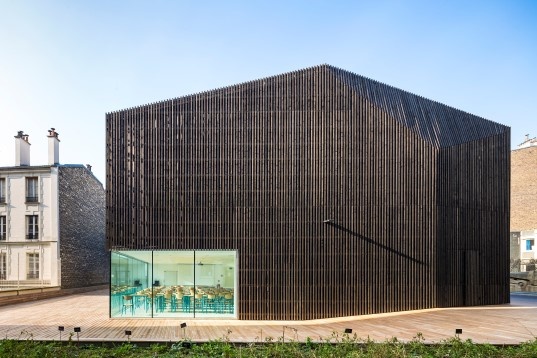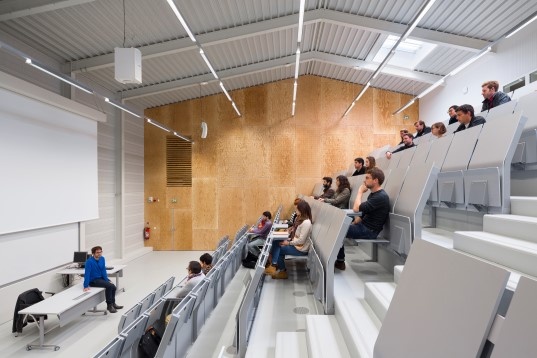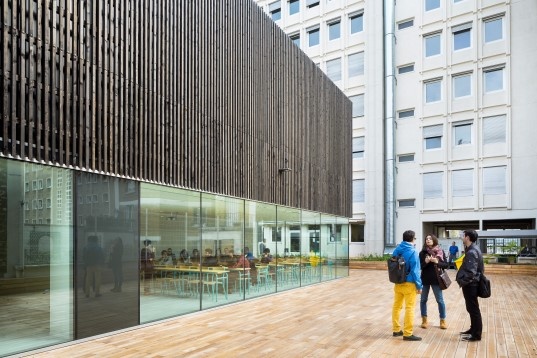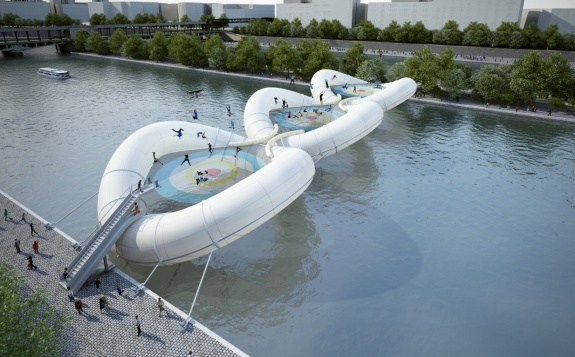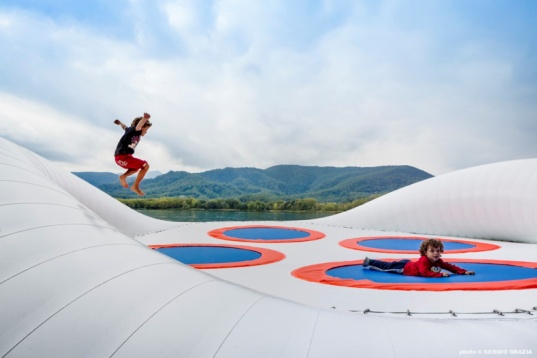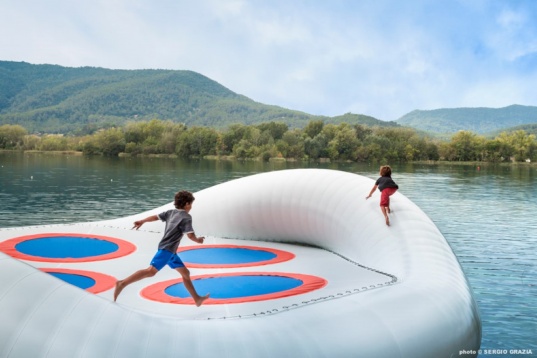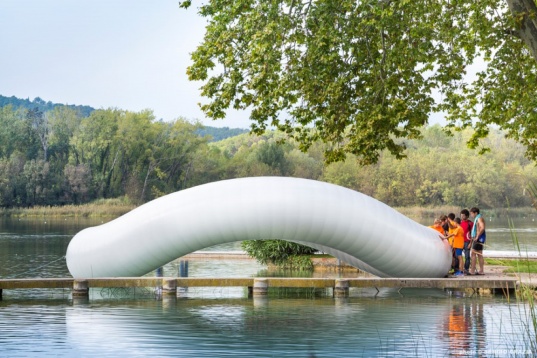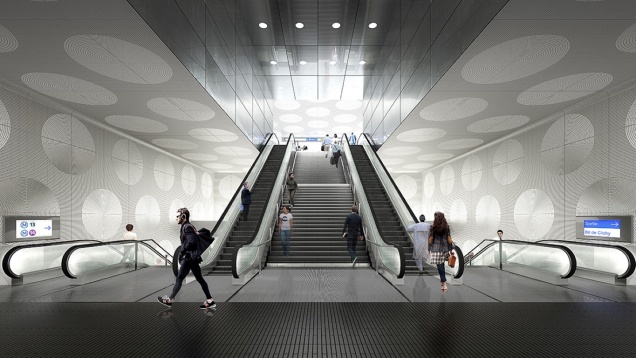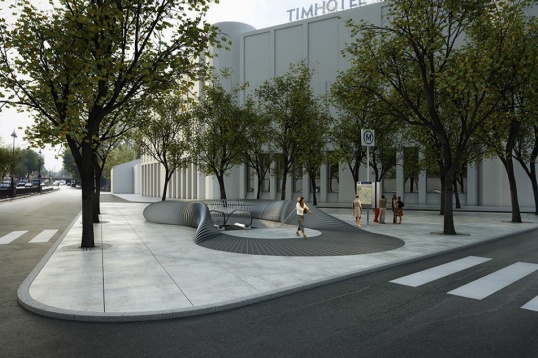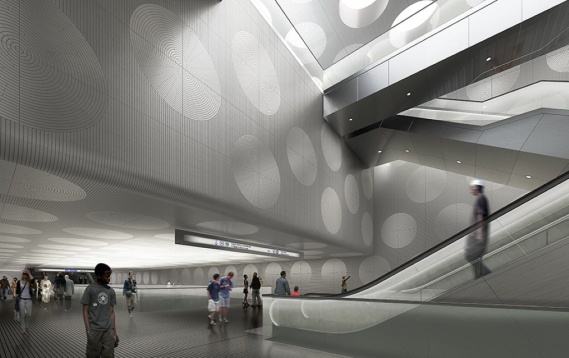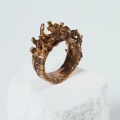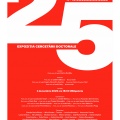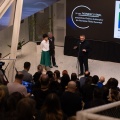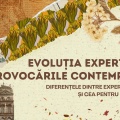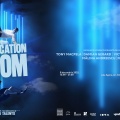HISTORY
AZC was set up in 2001 with the idea that exploring architecture and its techniques could help them to improve the built environment.
SPECIFIC
AZC’s interest does not lie in concept alone, its passion is in designing real buildings that are built for real life. AZC today numbers around 25 people, qualified architects from all over the world. They speak French, English, German, Italian, Romanian and much more. The cultural mix which defines the practice feeds its desire to cross frontiers.
ROMANIAN DESIGN WEEK APPEARANCES
2016 // Urban barn: two lecture theatres revitalise a city courtyard
This project for two 200-seat lecture theatres and a series of teaching spaces provided the opportunity to effectively transform a courtyard at the centre of a city block. The project reveals the site’s urban potential for its users, neighbours, visitors or passers-by, and responds to a need for simplicity and coherence, with a mix of functional logic and aesthetics.The heart of the block at 143 Avenue de Versailles in western Paris’s smart 16th arrondissement belongs to the Université Paris Descartes. Its formerly cluttered appearance was due to the number of buildings and structures that had accumulated above the one-storey car park that filled the whole courtyard. The key to the space’s transformation was to make it functional and to enhance it. The compact, minimal outline of the new building, the simplicity of its design, the level of finish and choice of materials are all part of giving this courtyard space its own identity, one that references a Parisian barn. The architecture optimises the project’s structural, regulatory and economic restraints. It was necessary to minimise the impact on the existing car park’s infrastructure, so we needed to design an elevated, lightweight volume.
2015 // BOUNCING BRIDGE, Paris
2015 // METRO LINE 14, Paris
AZC was set up in 2001 with the idea that exploring architecture and its techniques could help them to improve the built environment.
SPECIFIC
AZC’s interest does not lie in concept alone, its passion is in designing real buildings that are built for real life. AZC today numbers around 25 people, qualified architects from all over the world. They speak French, English, German, Italian, Romanian and much more. The cultural mix which defines the practice feeds its desire to cross frontiers.
ROMANIAN DESIGN WEEK APPEARANCES
2016 // Urban barn: two lecture theatres revitalise a city courtyard
This project for two 200-seat lecture theatres and a series of teaching spaces provided the opportunity to effectively transform a courtyard at the centre of a city block. The project reveals the site’s urban potential for its users, neighbours, visitors or passers-by, and responds to a need for simplicity and coherence, with a mix of functional logic and aesthetics.The heart of the block at 143 Avenue de Versailles in western Paris’s smart 16th arrondissement belongs to the Université Paris Descartes. Its formerly cluttered appearance was due to the number of buildings and structures that had accumulated above the one-storey car park that filled the whole courtyard. The key to the space’s transformation was to make it functional and to enhance it. The compact, minimal outline of the new building, the simplicity of its design, the level of finish and choice of materials are all part of giving this courtyard space its own identity, one that references a Parisian barn. The architecture optimises the project’s structural, regulatory and economic restraints. It was necessary to minimise the impact on the existing car park’s infrastructure, so we needed to design an elevated, lightweight volume.
2015 // BOUNCING BRIDGE, Paris
This project was developed for a competition which topic was to design a contemporary bridge in Paris. As the opportunity presented itself, AZC chose to design a bridge of a new kind. A bridge that would allow amazing uses and surprising sensations. It would allow sensational amusement and release our deepest emotions. Thus AZC imagined a Bouncing Bridge!
The Bouncing Bridge is a self-supporting structure made of giant trampolines, dedicated to the joyful release from gravity as one bounces above the river. It is made of three modules that act as inflatable rings, each one of thirty meters diameter. The floating rings are fabricated in PVC membrane and attached together with ropes to form a stable crossing. In the central part of each module, a net is tense to hold the trampolines.
To test the prototype in real conditions, it has been brought to the Lake of Banyoles, near Girona (Spain). Transport was easy, as once the module is fold up, it occupies less than one cubic meter! It is economical, quick to install, and easy to carry. Initially the Bridge was designed to cross the river Seine on a precise location. However, it can occupy various dimensions depending on the site. As it can be built on demand, it is a bespoke project. The experience with the prototype confirmed that people have a true desire for amusement.
2015 // METRO LINE 14, Paris
The project concerns four new Parisian metro stations that will extend line 14 past its current St. Lazare station terminus, with locations at Pont Cardinet, Porte de Clichy, Clichy St. Ouen, and Mairie de St. Ouen.
Of particular importance for AZC in the envisioning of this project is the willingness to engage in coordinated urban development through the city. The space will exude the dynamic, urban, buzzing atmosphere of the 21st century metropolis.
Confident in the enormous potential of a new architectural image, AZC has maintained an open and global approach to the project, free of preconceived notions. Leaving aside nostalgia and historicism, AZC has made his task one of reinterpreting and giving new sense to the metro’s space. AZC’s architectural objectives are: sustainability, economy of means, the search for the symbolically urban.
With regard to the metro, sustainability also involves its easy maintenance, a choice of durable materials, and the clarification of very precise technical detail guidelines. AZC wishes to work with elements readily identifiable by users: ceramic, stone, glass; elements found in urban spaces in similar placement, such as paving stones in public squares. Without leading to the exclusion or erasure of specific elements (stairwells, escalators, metro), it will help facilitate res-olution of problems, while reinforcing the qualitative aspect. The space is freed of all superfluous elements.
With regard to the metro, sustainability also involves its easy maintenance, a choice of durable materials, and the clarification of very precise technical detail guidelines. AZC wishes to work with elements readily identifiable by users: ceramic, stone, glass; elements found in urban spaces in similar placement, such as paving stones in public squares. Without leading to the exclusion or erasure of specific elements (stairwells, escalators, metro), it will help facilitate res-olution of problems, while reinforcing the qualitative aspect. The space is freed of all superfluous elements.
















